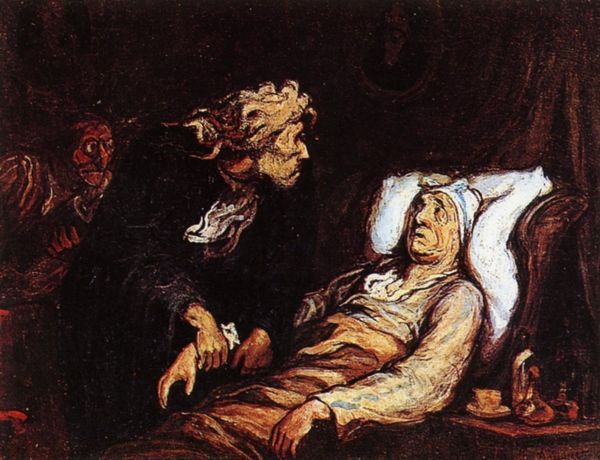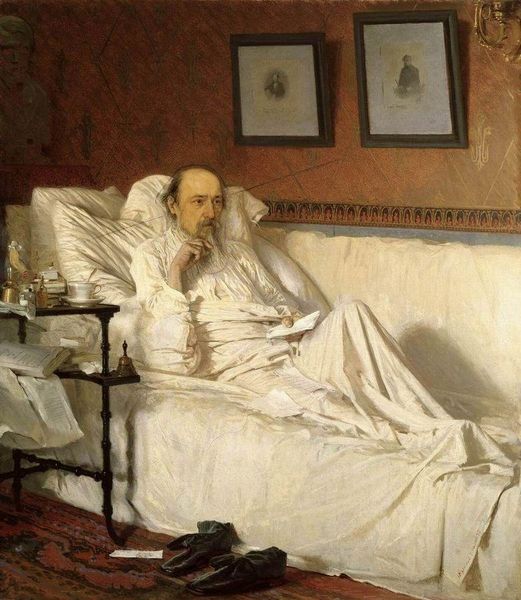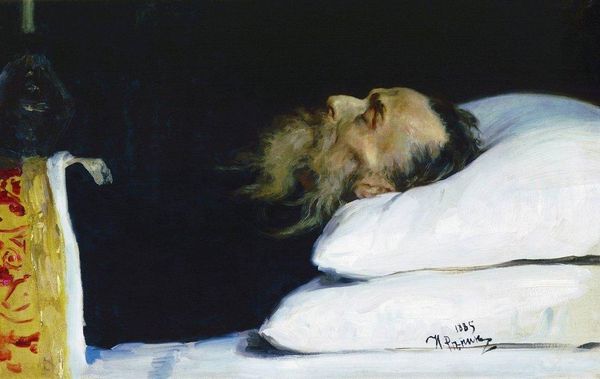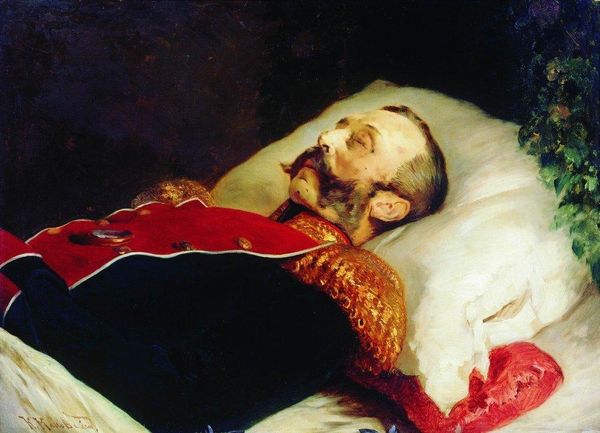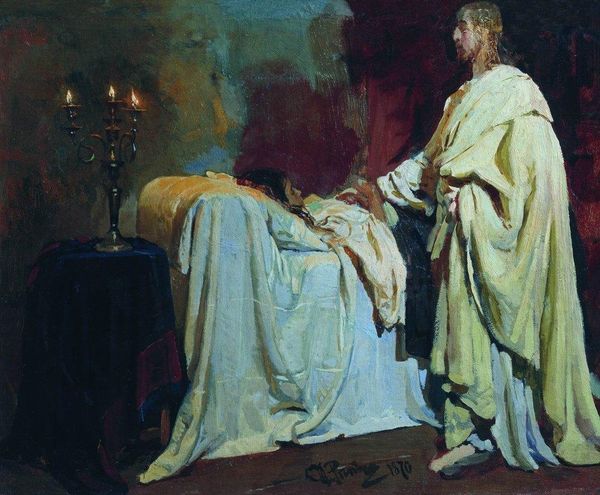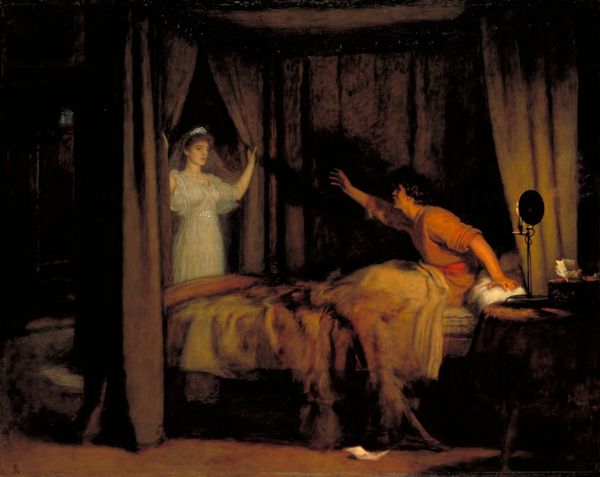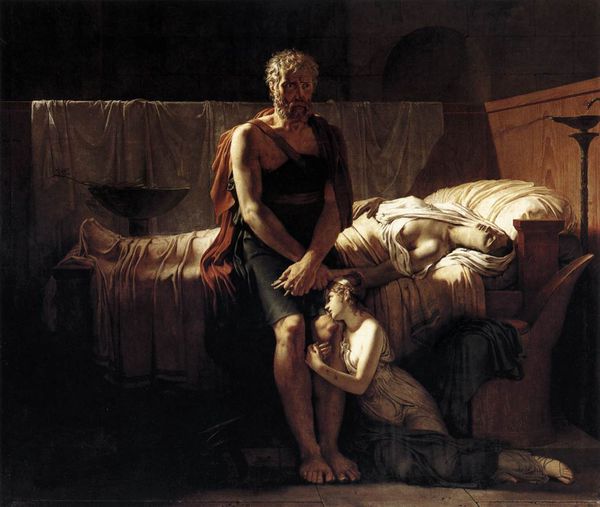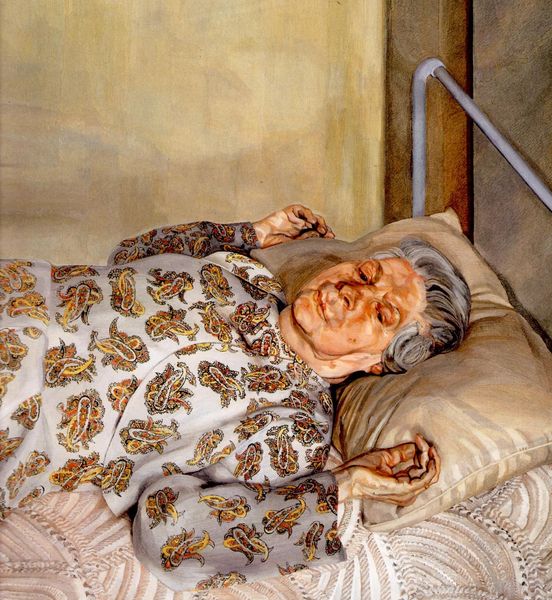
Dimensions: 197 x 245.2 cm
Copyright: Public domain
Curator: Arturo Michelena’s “Miranda en La Carraca,” an oil on canvas completed in 1896, portrays Francisco de Miranda during his imprisonment. The piece captures a profound sense of isolation. What strikes you most immediately? Editor: The somber atmosphere is immediately palpable. The ochre and sienna palette really traps the eye, fostering an interior space that communicates confinement, but in such an elegant fashion that it softens the harsh realities it is representing. Curator: Indeed, the color palette reinforces the subject’s grim circumstances. Michelena positions Miranda within a legacy of revolutionaries, yet there’s a unique Venezuelan narrative at play here, reflecting the social anxieties of the time. Editor: It's a stunning achievement of chiaroscuro; observe how the light source emphasizes the texture of the stone walls and bedding in ways that feel true to life. The artist seems obsessed with natural representation, even at the cost of perfect idealization. Curator: That might speak to the academic approach and its relation to Romanticism but I read Michelena’s choice as a strategic deployment. By highlighting the material conditions of Miranda's imprisonment, the painting invites viewers to question power structures. He humanizes the iconic figure. Editor: Perhaps, but look at the way the shackles, while present, are not central to the composition. Rather, the artist chose to spotlight Miranda's intellectual being, a more humanist expression, I think, via the semiotics of posture, gaze and costume. The formal elements downplay obvious historical tropes to access universal concepts of solitude, thought and resistance, beyond simplistic notions of national pride or shame. Curator: Your point is taken about Michelena’s choices; regardless, such subtle formal manipulations should still be placed into the context of post-colonial Venezuela grappling with its identity. The figure of Miranda represents the complex legacy of revolution and unfulfilled promises, a recurring theme in Latin American art. Editor: Certainly, it also demonstrates a certain technical brilliance. Look at how Michelena uses light and shadow to emphasize texture! The balance of realistic detail with the classical portrayal enhances the picture’s complexity. Curator: It certainly stimulates many compelling dialogues, particularly about identity, legacy and how we, as a culture, visualize and interpret historical figures. Thank you for sharing your analysis. Editor: Likewise; examining artworks from different viewpoints helps us to consider a more holistic understanding of visual culture, not only within its time but also in the continuum of Art History itself.
Comments
No comments
Be the first to comment and join the conversation on the ultimate creative platform.
